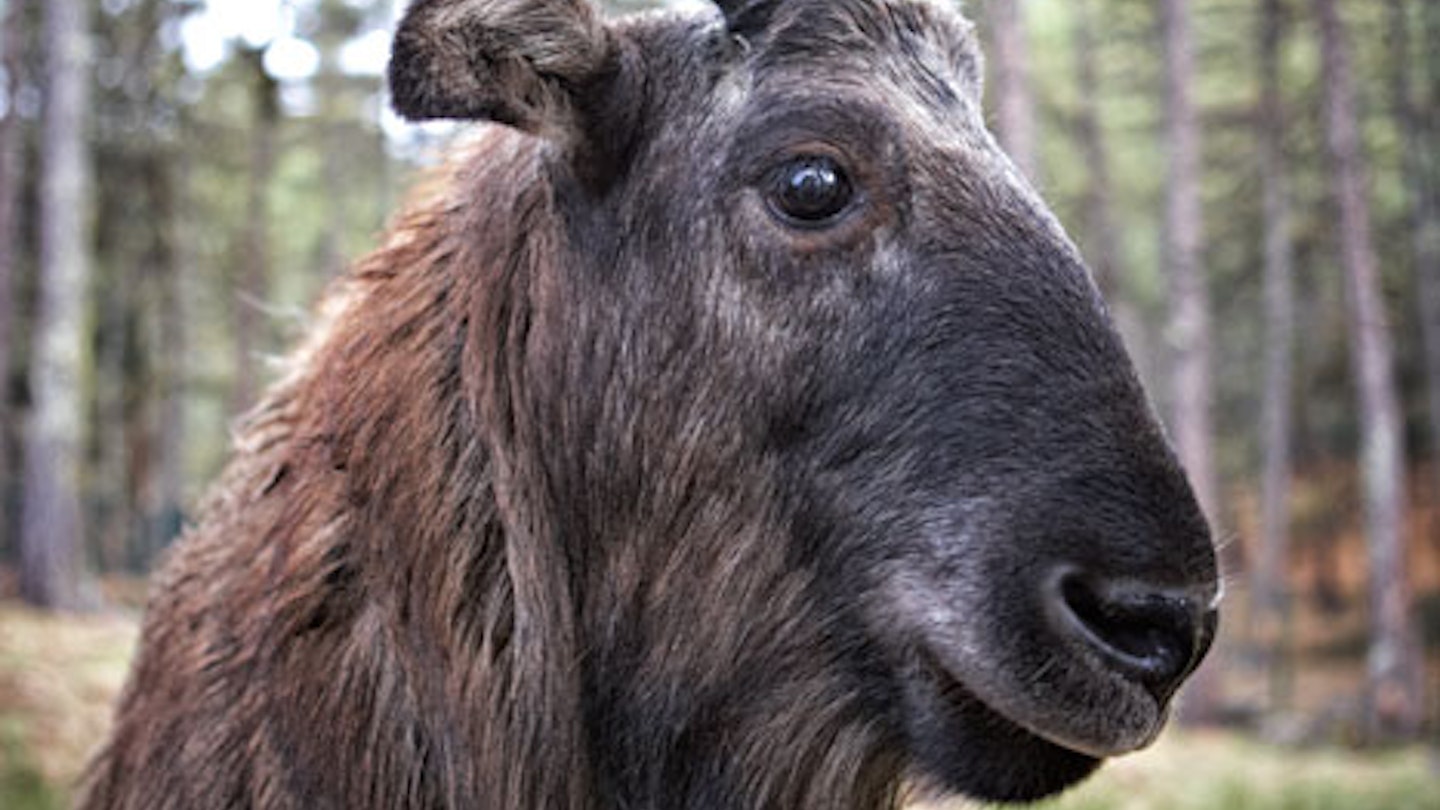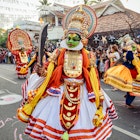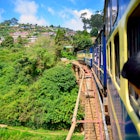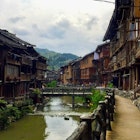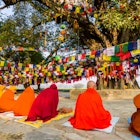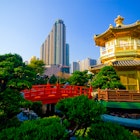Bhutan is an otherworldly place, where Buddhist traditions mix with a new-found modernity and great reverence is shown to tigers, Steven Seagal and the flaming thunderbolt of wisdom. Peter Grunert of Lonely Planet Magazine shows you the sights of the Himalayan kingdom.
A takin - visually, a mix of mountain goat and gnu. Photo by Jonathan Gregson
The takin: Bhutan’s national animal
At the edge of a forest cloaked in clouds, thick with the scent of pine and garlanded with peach blossoms, a sign reads ‘Please do not tease the animals’. Here live the takins of Thimpu. A local legend tells how the Bhutanese national animal was created from the remains of a lunch eaten by Lama Drukpa Kunley, a 15th-century Buddhist saint, known as the Divine Madman. He combined the skeletons of a cow and goat and brought them back to life with a loud belch.
In the 1990s, Jigme Singye Wangchuck, then king of Bhutan, granted the takins freedom from the captivity of a zoo. This gesture represented an early ripple before a wave of modernity was allowed to sweep through his secretive mountain kingdom, a world all of its own between China and the northeastern tip of India. The first tourists were only permitted to come here in 1974 and democracy wasn’t introduced until 2008.
Receiving instructions at Thimpu painting school. Photo by Jonathan Gregson
Traditional crafts in Thimpu
Bhutan's traditional crafts are taught to fresh generations at Thimpu’s National Institute for Zorig Chusum (The Painting School). In the wood-carving classroom, the heads of a tiger, leopard, boar, owl, snake, deer, dog, ox, rabbit, dragon and a mythical bird called a garuda all snarl down at onlookers. The students are creating masks that will be gaudily painted in the style of those worn by performers at the tsechus - religious festivals - held across the country each spring.
Ancient art of archery
If machismo, a love of Buddhism and a certain urge to handle a weapon are long-respected traits in Bhutan, it may not seem so bizarre to learn that leathery Hollywood action hero Steven Seagal – star of Under Siege and countless similar movies - is one of the country’s favourite celebrities. In recent years, he made a widely publicised visit to Bhutan and has been proclaimed the reincarnation of a holy 13th-century Buddhist treasure hunter. Inspired by the example of the Divine Madman, Bhutanese men still enjoy firing arrows over great distances.
Worshippers line up to place offerings at the Pangri Zampa. Photo by Jonathan Gregson
Temple life
Close to Thimpu and accessed by a steep climb on foot - equally breathtaking for its panoramic views over valleys dense with the blooms of rhododendrons and the fight for oxygen in the thin mountain air - is the Tango Goemba. Here, a privileged glimpse can be had of the gilded statues of Buddha within its inner sanctum, and boy monks learn English grammar, Buddhist philosophy and soccer skills. Also near the capital is the Pangri Zampa, a monastic temple used as a school of astrology, where a ceremony is under way to bless the country for the year ahead. Pungent clouds of incense fill the air as groups of monks chant, blow slender trumpets and perform whirling acrobatic dances while dressed as mythical heroes.
The fabled Taktshang Goemba. Tigers still prowl the surrounding mountains. Photo by Jonathan Gregson
Ascending to Tiger’s Nest Monastery
The long way round to Taktshang Goemba, or Tiger’s Nest, winds across the craggy spines of the surrounding mountains rather than up the well-made path from the car park a couple of hours below. The trail opens on to a high plateau where yak herders seek shelter in winter and the Uma Paro hotel establishes a tented camp in the spring and summer. Guests spend the night in these gale-shaken tents before heading to the Tiger’s Nest at first light. As dusk settles, whispers turn to the mythical yetis that have been given their own national park in the east, and of a population of tigers recently tracked by government rangers within sight of this camp.
The Tiger’s Nest monastery is a shimmering monument with golden pinnacles to its rooftops set over stark, whitewashed walls that somehow cling to the cliff face. From the path where pilgrims gather to look on in awe, ropes bearing prayer flags in a rainbow of colours are strung over a deep gorge towards the monastery. These carry the wishes of believers off on the breeze, spiralling them across the valley beyond - full of hope for the present and wonder at a future once unimagined in this kingdom of the clouds.
This is an excerpt from a feature written by Peter Grunert, editor of Lonely Planet Magazine.
Find more of the best travel writing and photography in Lonely Planet Magazine.
